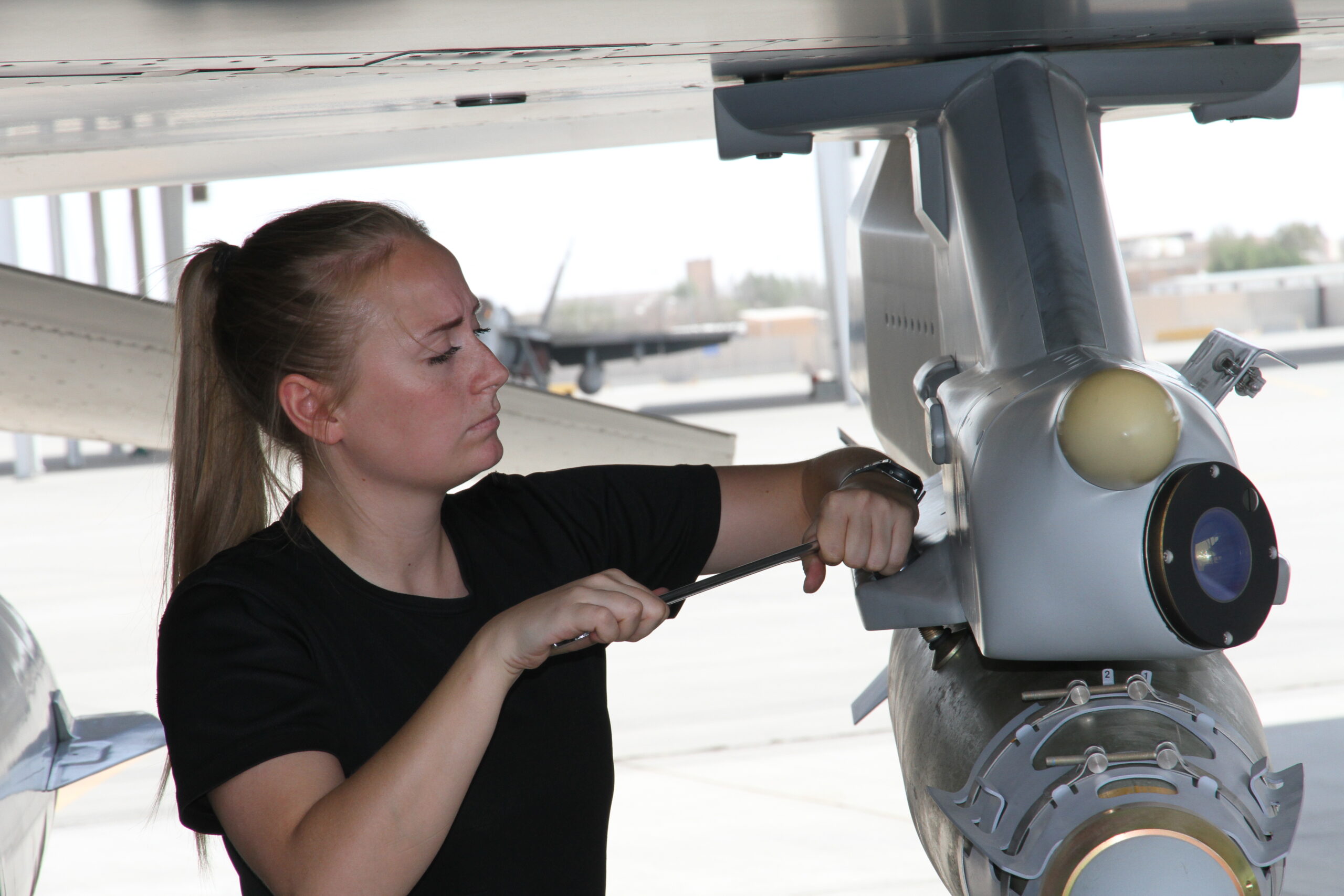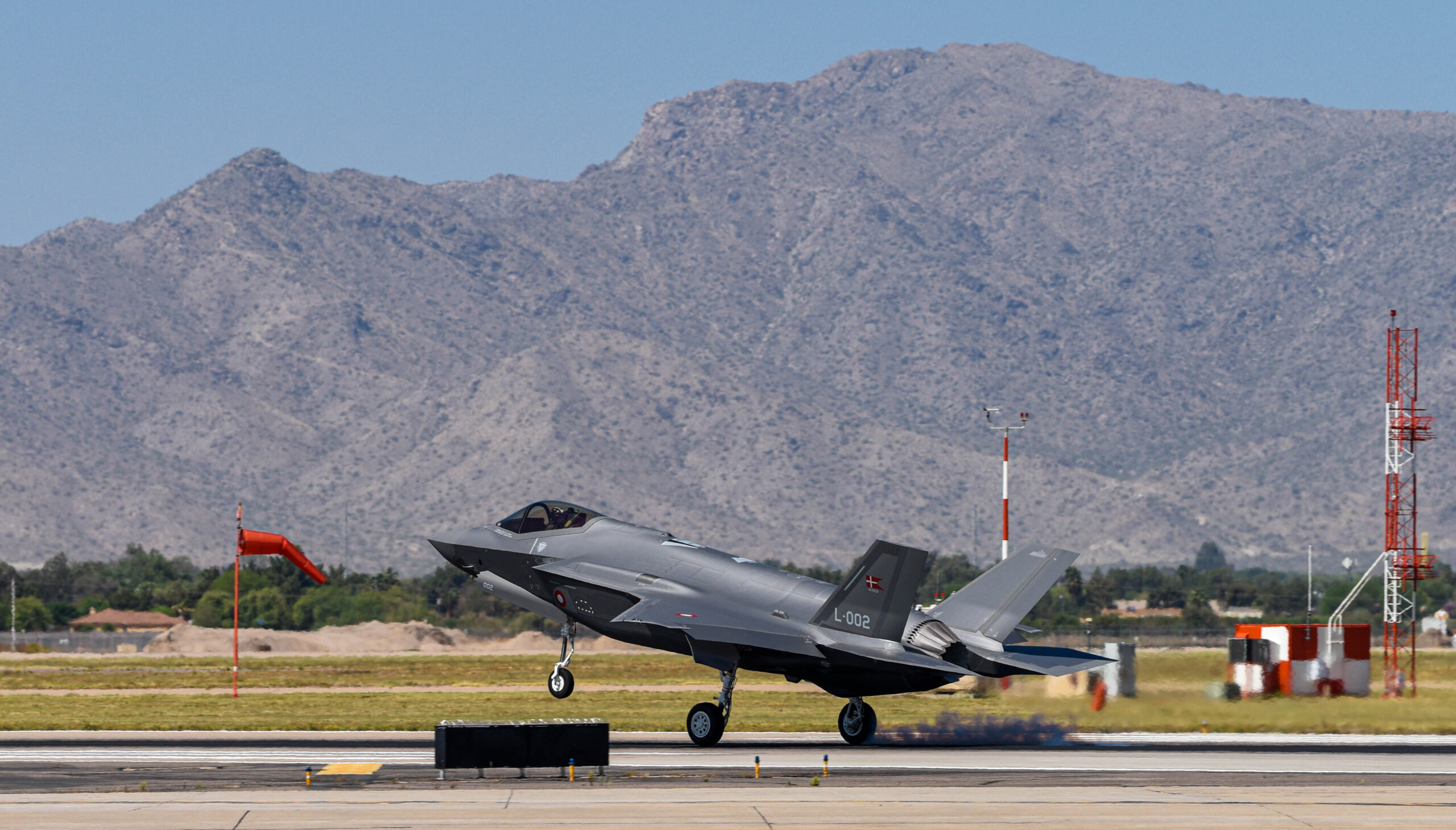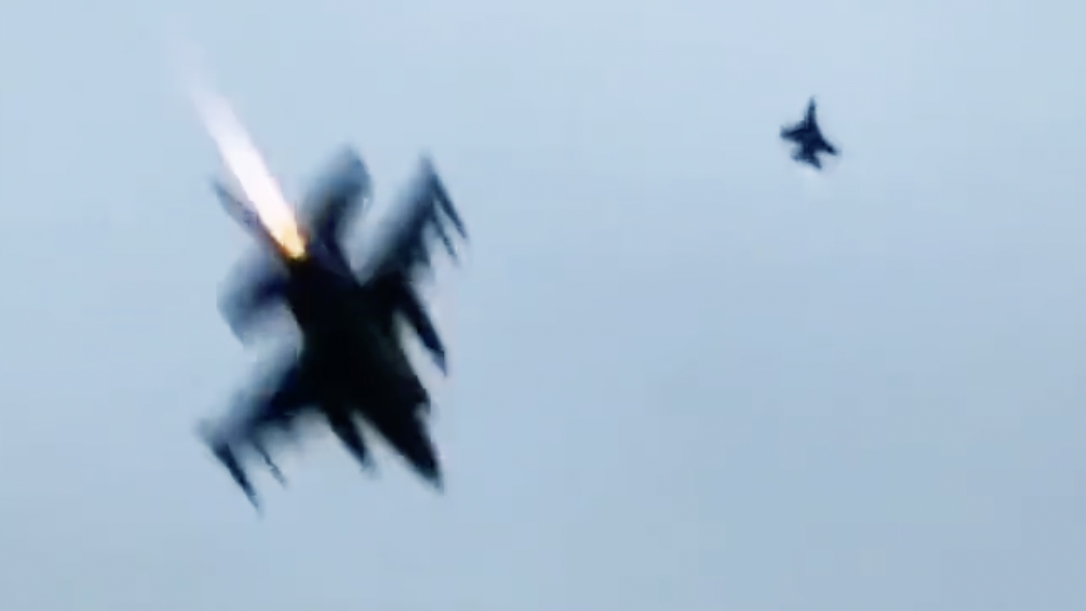A fighter jet, tearing over an airbase at low level, afterburner ablaze, is a highly familiar trope by now, whether as part of an airshow or something less official. But multiple jets ‘thumping’ an airfield, from all directions, in a simulated multi-vector attack profile, is certainly not something we see every day, especially in an age of precision guided weapons. That makes the appearance of one particular video, showing Royal Danish Air Force (RDAF) F-16s, all the more awesome.
The video in question is remarkable for the sheer number of jets passing over the base. In fact, it’s hard to keep count as they scream overhead from multiple angles in a highly dynamic scene. It’s no surprise that the observers on the ground seem transfixed by the display, camera phones held aloft.
The occasion, as far as we know, was the 40th anniversary of the F-16’s service career in Denmark. The first of an eventual 77 F-16s for Denmark was delivered on January 28, 1980. To celebrate this milestone, the RDAF staged two formation flights, one in the morning and one in the afternoon, on January 17, 2020. These flew complex routes over much of Denmark, taking in various different airbases, airports, and landmarks, mainly flying at an altitude of around 2,000 feet. Each formation flight involved 10 jets, one of which was a camera ship to record the event.
It seems the video in question shows a portion of the first formation flight, which concluded at Skrydstrup Air Base in the south of Jutland. Here, the flight wound up with a nine-ship flyby followed by a 10-minute “squadron attack” on the base itself. The same finale was repeated at the end of the afternoon flyby, too.
A video apparently showing the conclusion to the second RDAF F-16 formation flight of January 17, 2020:

The War Zone spoke to Paul Tremelling, a veteran U.K. Royal Navy Sea Harrier and Harrier GR9 pilot, as well as a former U.S. Navy exchange pilot on the F/A-18E, to get his take on how this eye-catching sequence might have been put together.
“It’s one of those that obviously looks pretty cool, and no doubt has some folk bleating about it looking dangerous … but I really don’t think it is,” Tremelling explains. “There seem to be three height-deconflicted elements. The lowest is the one that comes from behind. The middle one is the one that the camera is originally watching and then there’s a further, higher formation that turns up last. There seems to be a slight stagger in that the ‘on top’ time of the elements is low, medium, high. Bear in mind that all players know which axis the others are coming from. I’m sure the team probably had some sort of ‘flinch’ or sanctuary plan by which they’d haul off if not visual by a certain point — or had radar or link contact. Obviously, they’d all be in radio communication too. No one turns through more than 180 degrees so keeping situational awareness on the different elements would have been easy.”

“The rough plan would probably be that the element leads would keep to the pre-briefed heights and times, and their subordinates would fly a loose (not close but not tactical) formation on them at the same height or very close to it,” Tremelling continues. “Good drills all around. Looked good.”
“A useful comparative would be the U.K. low-flying system where aircraft mainly all operated at 250 feet above ground level (lower at times, higher at others) at 420 knots (with a limit of 480 knots, I think) and it was quite normal to ‘bounce’ other aircraft, so an impromptu 4-versus-4 was perfectly fine. Equally, I think at Red Flag you were (admittedly in the medium airspace) allowed 12 aircraft (from memory) maneuvering visually in one fight. I remember once hearing ‘Red Air you are all at the merge’ which meant eight Red plus whatever the Blue side had there too … I think I could see two or three! Anyway, as I said, it looked good.”

Of course, in the world of modern air combat, a multi-ship attack directly over a hostile airbase is extremely unlikely, although as recently as Operation Desert Storm in 1991, coalition strike jets did fly attacks on well-defended Iraqi airbases, flying directly over the targeted runways, albeit at night. You can read more about some of those hazardous missions here.
Prior to that, during the Cold War era, airbases were also highly prized targets and would have relied on this kind of multi-axis, low-level strike, with the aim of sneaking under the enemy’s radar coverage. Weapons used were designed for low-level releases and would also have included tactical nuclear weapons, although Denmark never received these.
A Royal Danish Air Force F-16 demonstration over Aalborg Air Base in 2012:

Suffice it to say, the prevalence of precision air-to-ground weapons with different degrees of standoff capability means that a fighter pilot today is extremely unlikely to have to risk a ‘point-blank’ raid on an active airbase, or any other well-defended objective, for that matter.
That said, training to attack an airbase (or any other fixed ground target) as part of a multi-ship formation remains very useful. The speed and complexity of the maneuvers over Skrydstrup will have helped sharpen the pilots’ skills in terms of getting to the assigned target or release point on time and at the correct height. But having so many friendly aircraft in more or less the same place, at the same time, would not be practical for a real-world strike. After all, in a multi-aircraft attack of this kind, the jets would have to be separated to prevent any of them from being hit by the fragmentation effect of detonating weapons.

So, the ‘attack’ on Skrydstrup was undoubtedly a valuable training exercise and also a great showcase of the capabilities of the RDAF pilots and their F-16 jets.
Fast-forward to 2023 and the RDAF is now finally preparing to bid farewell to its long-serving F-16 fleet. The first two of a planned 27 F-35A stealth jets for Denmark arrived at Luke Air Force Base, Arizona, in April 2021. Here, six Danish F-35s are embedded in the 308th Fighter Squadron, a joint U.S. Air Force, Royal Netherlands Air Force, and RDAF training unit.

Until the F-35 takes on the RDAF’s fighter assignment, Skrydstrup’s final squadron of F-16s, 30 of which are operational at any time, will continue to defend the country’s airspace, as well as performing foreign assignments, which in recent years have included deployments to Iceland and the Baltic States.
A first class of RDAF F-35 pilots, who have converted from the F-16, is expected to graduate the Joint Strike Fighter training syllabus early this year. Later this year, meanwhile, the first of 21 F-35s to be stationed in Denmark are planned to arrive at Skrydstrup. In preparation, the airbase is undergoing a major overhaul, with new aircraft shelters, maintenance facilities, and training facilities.
Like many of its NATO allies, Denmark’s fighter future lies with the F-35. It can only be hoped that, with the passing of the F-16, we won’t have seen the last of the Royal Danish Air Force’s dramatic formation flights, like those that took place to mark the Viper’s 40th anniversary in the country.
Hat-tip to @AvHistoryOgre for bringing this video to our attention.
Contact the author: thomas@thedrive.com
